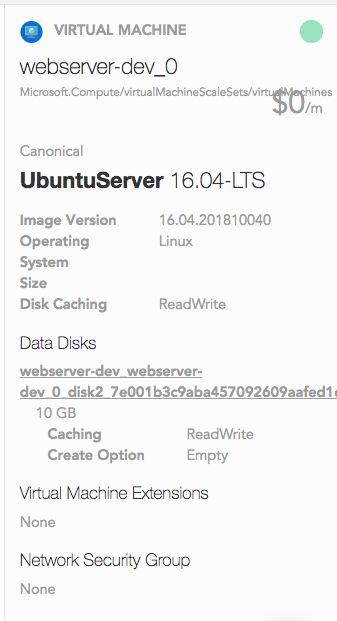This is the third in a series of posts highlighting tools I have found particularly useful for visualizing AWS and Azure, including:
In this post we will take a look at Hava - https://www.hava.io/
Hava
Hava is a web based service that produces automated diagrams of your existing infrastructure and network topology in both AWS and Azure. Diagrams are created by connecting to your AWS and Azure accounts via a read only user account, that securely gathers all items in a VPC or Resource group. Connections, security groups, cost estimates are all things that Hava diagrams provide. Below is a simple diagram of an AWS deployment.
Azure Support
Unlike other visualization tools, Hava supports both AWS and Azure deployments. Resources of a given Azure resource group are diagramed and their details are provided. Azure diagraming supports versions which allow you to look a differences within a given resource group over time. Below is a diagram of an Azure deployment.
Benefits:
Of the three visualization tools compared in this series, Hava is the only one that supports both AWS and Azure. I really like the flexibility to diagram both, as it helps show case multi-cloud deployments.
Hava provides not only infrastructure diagrams but also includes a security view for it’s Professional users. This is helpful to visualize security group interactions.
Excellent support. As I have been using Hava, I have run into a few snags with the live updates. I was very pleased with the level of support provided to correct the issues. In fact the website provides a chat window so talk directly with support to get questions/issues answered. Kudos to the Hava team, and in particular Adam for his help.
Nice to Haves:
I have found the pricing of Hava to be out of many’s price range. To get the infrastructure and security views, which I believe is one of Hava’s biggest benefits, the cost is $99/month. This is double the price of the other offerings. If you strip out the security components they do have a $49/month offer which is reasonable for being able to diagram both AWS and Azure deployments.
Azure support is there, but currently feels like a second class citizen. AWS resources and diagrams are more robust and security views are not yet available for Azure.
Below is a cost model for the different Hava subscription levels.










